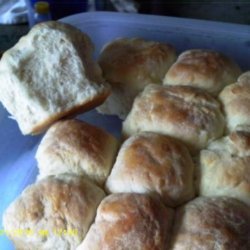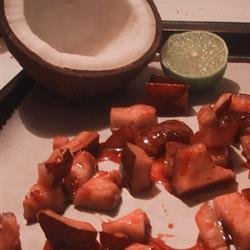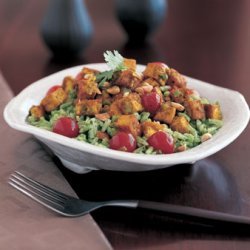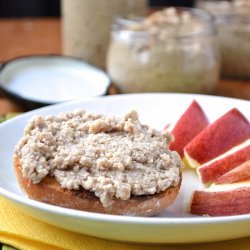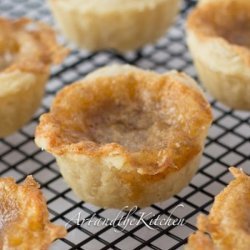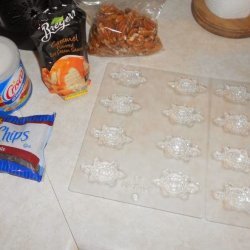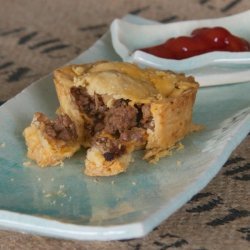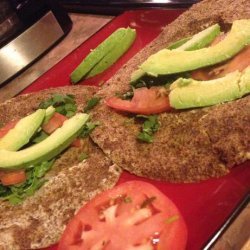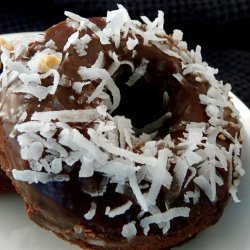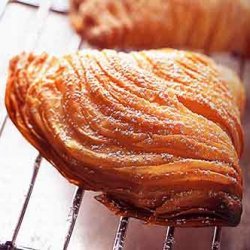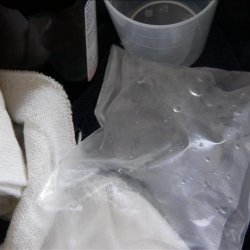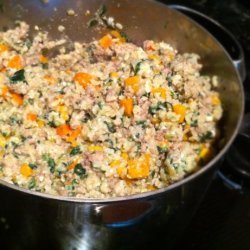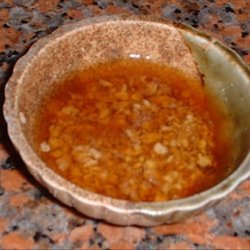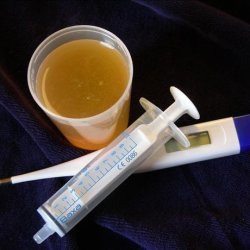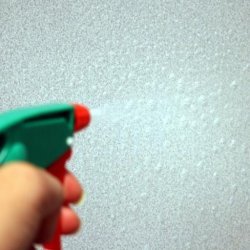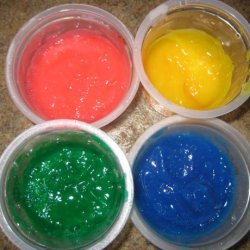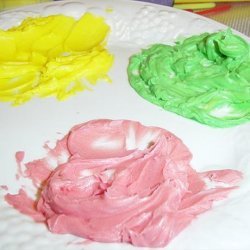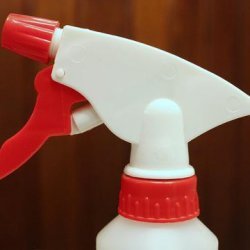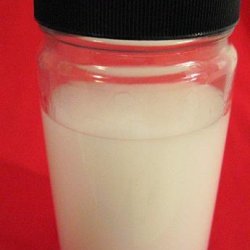Directions:
- NOTE: The combination of lye and water is caustic. It will burn the skin and may cause blindness if it enters the eye. Safety goggles and protective gloves are recommended for all and are wholeheartedly encouraged for the novice soapmaker. Please do not allow children or handicapped adults into your work area. Lye into water can often bubble up; do not look into the pan when adding lye to the water. Read the safety precautions on the lye container prior to starting on your soap making.
- Allow two hours for the process and make sure that you have time if it takes a little longer.
- Prepare your soap mold(s) by coating them with an oil or baking spray. I like to use small, plastic, individual serving size containers so that I don't have to cut the soap. Look at your containers and hold them to see if your soap will be the right size. This recipe will make enough soap to fill about 10 eight ounce containers. The containers don't need lids.
- Pour the water into a stainless steel or speckle ware pan. Do not use aluminum or glass as the lye can pit your pan and ruin your soap.
- Standing back from the pan, add the lye to the water. This should cause a chemical reaction whereby the water heats. Let this cool to about 100°F.
- In another (the deeper) stainless or speckle pan combine the lard, tallow and oil. Warm them on low until they are at about 100°F.
- When both pans are at 100F-110F, slowly pour the lye water into the fat, stirring constantly. Use a wood spoon or stainless steel spoon for stirring.
- As you stir, you will see the mixture go from a dark color to a light color. This is the visual proof that the oil and water are mixing.
- After you've mixed it by hand for a few minutes, you may use your electric mixer to continue mixing. Wear your safety goggles and gloves as the soap is very caustic and will burn skin. If your pan isn't that deep, you might need to cover it with plastic wrap and put a hole in the center for your mixer to prevent splatter. Every now and again, run your spatula along the edge of the pan to incorporate all of the soap into the mixture. Again, keep children out of the area.
- You are now watching for 'trace'. Trace is when you can see your path in the pot. More specifically, it is when you take a spoonful of soap and pour it on top of the soap, it sits there for a few seconds before blending into the mixture. This can take from 30 to 90 minutes to achieve, sometimes a bit longer.
- At trace you may add (10-20 drops of) essential oils for fragrance, if you wish, but blend it in quickly.
- As soon as you are at trace, and after the optional oils are added, pour the soap into your molds. Work quickly. Make sure that the soap is level in the molds as it has a tendency to puddle up in the middle.
- Put all of your molds into a wood crate or sturdy cardboard box. (If you plan on making several batches over the next few weeks, put a note in the box stating the date that you made the soap.). Wrap a blanket or two around the box to keep the heat inside. Put the box in an out of the way place where children and pets can't get into it. An electric oven or a gas oven with an electronic ignition is a good place. (Will a pilot light melt your plastic containers? If so, crack the oven door open.).
- After 2-4 days you may unmold your soap. If, after a week, they present a challenge to unmold, put them in the freezer for a few hours. Return them to the box, leaving room so that air may circulate around them. Make certain that children and pets won't disturb them as they are still caustic. Wash your hands after handling the soap so that you don't transfer any lye. Your soap is still considered 'green' or uncured.
- Let the soap cure for at least four weeks prior to use. The harder the soap feels, the more it has cured. After four weeks it is safe to use. It will just dissolve quicker than a soap that has cured longer.
- A NOTE ABOUT OILS: I've used fragrance oils in soap. Fragrance oils are artificial. The label must state that they are safe for use on the body. Not all candle scents are safe to use in soap, so read your labels. Fragrance oils, because they are artificial, often will change the appearance of your soap, causing you to lose control over the look of the finished product. Because of that, I highly recommend that, if you want a scent, you use essential oils. Yes, they are expensive. Different oils from different companies will hold up differently in each batch of soap. It will take experimentation for you to really perfect the scent in your soaps, but your family and friends will love to receive your experiments as gifts.
- A NOTE ABOUT COLOR: Do not try food coloring or clothing dye to tint your soap. At trace, you may pull out a portion of soap and add some cocoa powder to it for a tint. You may purchase soap tint at your local craft or hobby store. Your water could be tinted from fresh fruits or vegetables and strained prior to the soap making. You may experiment in a number of ways to see what you prefer and what you don't at all like.
- A NOTE ABOUT EXPERIMENTATION: Keep notes on everything that you do. I'd seriously recommend sending yourself an email with your recipe and notes for each batch of soap since I've gone through the heartbreak of a waterlogged notebook and a virus-laden computer containing my soap notes. You can print and compile your emails if you like, and if your book gets ruined, do it again! Happy soapmaking!
Nutrition Facts
| Amount Per 1 Serving | |||
| Calories | 1806.46 Kcal (7563 kJ) | ||
| Calories from fat | 1787.75 Kcal | ||
| % Daily Value* | |||
| Total Fat | 198.64g | 306% | |
|---|---|---|---|
| Cholesterol | 159.52mg | 53% | |
| Sodium | 1.42mg | 0% | |
| Protein | 7.37g | 15% | |
| Calcium | 7.1mg | 1% | |
| Amount Per 100 g | |||
| Calories | 626.75 Kcal (2624 kJ) | ||
| Calories from fat | 620.26 Kcal | ||
| % Daily Value* | |||
| Total Fat | 68.92g | 306% | |
|---|---|---|---|
| Cholesterol | 55.34mg | 53% | |
| Sodium | 0.49mg | 0% | |
| Protein | 2.56g | 15% | |
| Calcium | 2.5mg | 1% | |
* Percent Daily Values are based on a 2000 calorie diet. Your daily values may be higher or lower depending on your calorie needs.
Find out how many calories should you eat.
Get Your Recipe of Health!
Follow RecipeOfHealth on Facebook!


